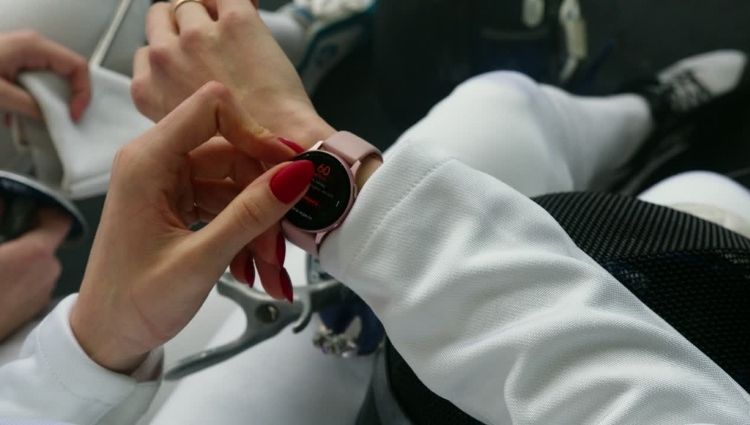Stuart Long, CEO of InfoBionic, explains why clinicians rely on standard medical devices, such as an FDA approved diagnostic wearable ECG, for the most accurate information possible
According to the Pew Research Center, one-in-five Americans used a smartwatch or fitness tracker at the beginning of 2020.(1) These wearable technologies provide vital-sign data, and many now offer electrocardiogram (ECG) functionality to better monitor heart health. But these products aren’t a substitute for devices specifically built for diagnostic cardiac monitoring, like standard 3-lead 2 channel ECGs. Stuart Long, CEO of InfoBionic, provider of mobile cardiac monitoring systems, says, “These devices can give consumers all sorts of information, but they cannot substitute more specialized technology for diagnostic purposes. Specifically built technology provides continuous monitoring of many cardiac conditions. It uses collected data to verify events and correlate symptoms to abnormal heart rhythms. This gives clinicians more information to make an accurate and timely diagnosis.”
Atrial fibrillation (AFib) is a common heart rhythm disorder resulting from irregular electrical activity within the heart muscle.(2) It’s estimated that about 12.1 million Americans will receive an AFib diagnosis by the year 2030.(3) This chronic health condition causes the upper two chambers of the heart, the atria, to beat irregularly, which interrupts normal blood flow throughout the heart and body.
Many cardiologists monitor patients with AFib using ECG, since this technology immediately detects changes to the electrical activity in the heart leading to unusual heart rhythms. Continuous monitoring is achieved with FDA-approved medical devices dedicated to remote patient monitoring (RPM). These devices are intended for use in the prevention, diagnosis, or treatment of diseases like AFib.(4)
Many of these popular market products have indeed received FDA approval as remote health monitors. However, the real question is does the information save your life? Long explains that the FDA has 3 categories(5) when it comes to monitoring.
Class 1
The US FDA defines Class I devices as devices which are “not intended for use in supporting or sustaining life or of substantial importance in preventing impairment to human health, and they may not present a potential unreasonable risk of illness or injury.“
Class 2
Class II medical devices are more complicated than Class I devices and present a higher category of risk because they are more likely to come into sustained contact with a patient. This can include devices which come into contact with a patient’s cardiovascular system or internal organs, and diagnostic tools.
Class 3
The FDA defines Class III devices as products which “usually sustain or support life, are implanted or present a potential unreasonable risk of illness or injury.” Just 10 percent of the devices regulated by the US FDA fall into Class III. This classification is generally extended to permanent implants, smart medical devices, and life support systems.
In its most basic description and related specific to cardiac monitoring, Level 1 is approval for screening, not for diagnosis; smart watches are an example. Level 2 is approved for diagnosis, but they cannot be relied upon for emergency care. This is the case for medical devices such as InfoBionic’s MoMe® Kardia monitor. Level 3 is the one in the hospital that is always sending real-time data being continually monitored live by a medical professional who can take immediate life-saving action should the monitor alert there’s a health emergency.
But wearable health devices are still useful. Certain algorithms can help to determine a person’s risk of heart disease or stroke based on device reading. This in turn helps motivate people to take specific steps to improve their health. This means consumers engage more, educating and enabling themselves to take greater control of their own health.
RPM Devices Offer Specific Benefits for Providers, Patients
As more healthcare practitioners turn to RPM devices to keep tabs on health consumers, a growing number of benefits are already being realized. These include:(6)
- Ability to collect various types of data using one device
- Better management of chronic health conditions
- Ease of access to patient data
- Increased efficiency in practice
- Lower cost.
Consumers, who are becoming more comfortable with RPM technology, also benefit from:(5)
- Better clinical outcomes
- Continuous monitoring of potentially dangerous health conditions
- Empowerment to take better care of their health
- Immediate transfer of clinical data to their provider
- Lower risk of hospitalization and complications
- Lower healthcare costs
- Not having to enter their own data into any computer or system.
It’s not to say that smart watches and fitness trackers have no place in healthcare. Instead, we should realize that these tools can be used in addition to dedicated RPM devices. Remote monitors, smart watches, and trackers can even be used together to present a more complete picture of a person’s health.
“The difference between a smart watch and a diagnostic RPM is that the medical device is prescribed by a doctor and a qualified clinician is at the other end, who can detect when there’s a problem. The doctor can call the patient and advise him or her to as to next steps in their care. It’s important to use the right tool for the right job, especially when it comes to cardiac care,” says Long.

